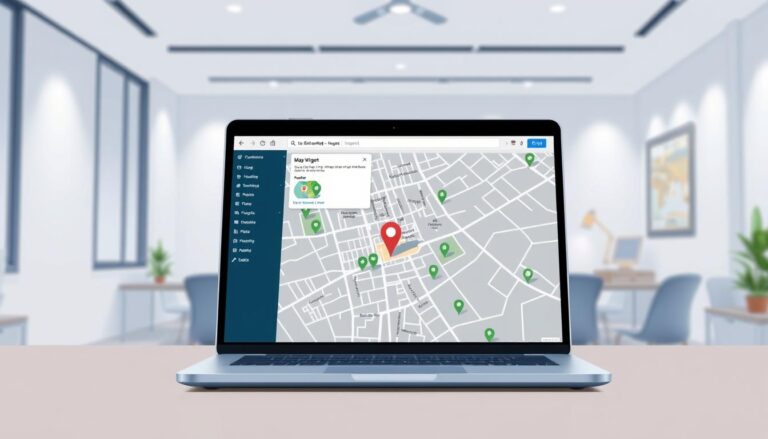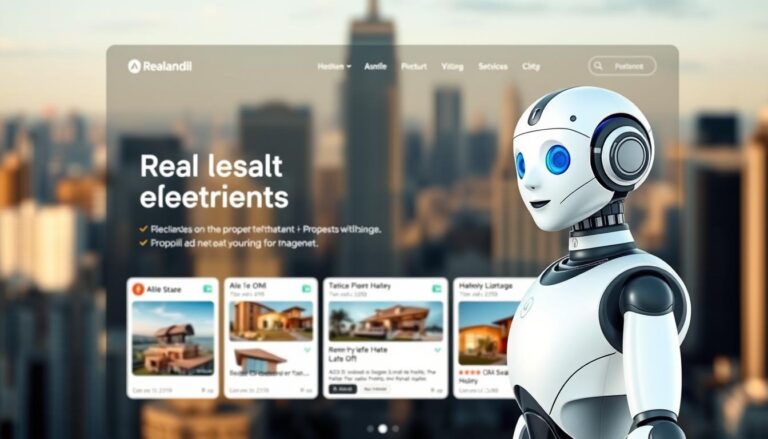As a local business owner, you face tough competition. I’m here to show you how programmatic SEO can boost your online presence and sales.
With programmatic SEO, you can automate your SEO tasks. This lets you focus on your local business. It makes your online presence stronger, reaching more people and boosting your local SEO game.
Key Takeaways
- Improve online visibility with programmatic SEO
- Automate SEO efforts for local business success
- Increase competitiveness in local SEO
- Reach a wider audience with optimized online presence
- Drive more sales through targeted SEO strategies
What is Programmatic SEO?
Programmatic SEO is a new way to improve your online presence. It uses algorithms and automation to manage lots of content. This is great for businesses with many locations or a big online presence.
Definition and Core Concepts
Programmatic SEO is all about using technology to make SEO easier. It includes automating content creation, making web pages better, and handling keywords for many sites. The main ideas are:
- Using data to make SEO choices
- Automating SEO tasks
- Creating more content quickly
- Making content more personal for users
This approach helps businesses get more online visibility and attract more visitors to their sites.
How It Differs from Traditional SEO
Programmatic SEO is different from traditional SEO. Traditional SEO is about manually improving each page. But programmatic SEO uses automation and data analysis for lots of content. The main differences are:
- Scale: Programmatic SEO can handle thousands of pages, while traditional SEO is better for smaller sites.
- Speed: Automation makes SEO strategies faster to implement.
- Personalization: Programmatic SEO creates more targeted content based on user data.
Knowing these differences helps businesses pick the right SEO strategy for their needs and goals.
Why Local Businesses Need Programmatic SEO
Programmatic SEO is changing how local businesses market online. It gives them a big advantage in busy markets. With programmatic SEO, local businesses can boost their online presence and draw in more customers.
The Competitive Advantage in Local Markets
In local markets, the fight for online visibility is tough. Programmatic SEO helps businesses scale their SEO efforts well. This means they show up in the right search results. Getting ahead in this way is key to bringing in new customers and getting more people to visit in person.
Scaling Your Local SEO Efforts
Scaling local SEO with programmatic SEO means making many pages for different locations. These pages are set up to do well in search engines. This way, businesses can focus on specific areas and make content that matches what local people are searching for. This helps them rank higher in search results.
Using programmatic SEO helps local businesses make their SEO work better. They can save money and get more out of their online marketing.
The Intersection of Programmatic SEO and Local Business Strategy
As a local business owner, it’s key to know how programmatic SEO fits into your strategy. This approach boosts your online presence and draws in more local customers.
Programmatic SEO helps businesses target location-specific keywords at scale. This means you can show up more in local search results. You find location-based keywords that people use to find what you offer in your area.
Targeting Location-Specific Keywords at Scale
To target the right keywords, you should:
- Do deep keyword research to find the best location-based keywords.
- Use tools to see how often people search for these keywords and who else is competing.
- Make your website content better by using these keywords to rank higher in local searches.
By focusing on the right keywords, you can get more people to visit your site from your area.
Building Location Pages That Convert
To make location pages that work, you need to create content that’s both useful and interesting. Here’s how:
- Make each location page unique and relevant to your local customers.
- Use SEO optimization to make sure your pages are easy for search engines to find.
- Add clear calls-to-action to get people to take action.
By following these tips, you can make your local business more visible online. This will help you attract more customers.
Setting Up Your Programmatic SEO Framework
A solid programmatic SEO framework is key for local SEO success. Local businesses need to focus on several important areas to set this up.
Identifying Your Local Business Data Sources
The first step is to find and organize your local business data. This means collecting info on your locations, services, and how customers interact with you. Accurate and complete data is vital for a strong SEO framework that can grow. By using data from CRM systems, customer reviews, and location info, businesses can build a detailed dataset for their SEO plans.
Creating Templates for Scalable Content
After finding your data sources, create templates for content that can grow. These templates should fit different types of content, like location pages and customer testimonials. Dynamic templating helps businesses make quality content quickly, boosting their SEO. Using templates keeps your online presence consistent, making it better for users and search engines.
Automation Tools for Implementation
The last part is choosing the right tools for automating your SEO framework. Tools like Airtable, Google Sheets, or SEO software can automate content creation, keyword tracking, and SEO analysis. These tools help local businesses work smarter, not harder, making their SEO campaigns more efficient.
Keyword Research Strategies for Programmatic SEO for Local Business
Programmatic SEO for local businesses relies on deep keyword research. This research helps create content that speaks to the audience. By knowing what local customers search for, businesses can tailor their content to meet those needs.
Finding Location-Based Keyword Opportunities
Location-based keywords are key for local businesses. They help these businesses show up in local search results.
Using Local Keyword Research Tools
Local keyword research tools are essential. Tools like Google Keyword Planner, Ahrefs, and SEMrush offer insights into search volume and competition. For example, Google Keyword Planner can help a business find keywords related to their services and products that are popular in their area.
Analyzing Competitor Location Pages
Looking at competitor location pages can uncover valuable keywords. By studying the keywords competitors use, businesses can spot gaps and opportunities. This involves checking the content, meta tags, and structure of competitor pages.
Analyzing Search Intent for Local Queries
Understanding search intent is key for local customers. Search intent can be informational, navigational, or transactional. For local businesses, transactional intent is most important, as it shows a user is ready to buy.
By analyzing search intent, businesses can make their content more relevant to local needs. This increases their chances of showing up in search results.
Effective keyword research combines the right tools and competitor analysis. This way, local businesses can boost their online presence and draw in more local customers.
Content Generation for Local Programmatic SEO
Creating dynamic templates is key for local programmatic SEO. It makes content feel personal to the audience. This helps businesses grow their local SEO while keeping things engaging.
Creating Dynamic Templates That Feel Personalized
Businesses can use variable insertion techniques and location-specific content elements for dynamic templates. This makes the content more relatable and tailored to the local audience’s needs.
Variable Insertion Techniques
Variable insertion techniques use placeholders in templates. These are filled with data like location names or landmarks. For example, a business might say: “Welcome to [City Name], your premier destination for [Service/Product].”
Location-Specific Content Elements
Adding content specific to the location can make it more appealing. This includes local events, news, or references to local figures. To do this, businesses can:
- Research local trends and events
- Include references to local landmarks or popular spots
- Use local dialects or expressions (where appropriate)
Avoiding the Duplicate Content Trap
One big challenge in programmatic SEO is avoiding duplicate content. To avoid this, businesses can:
- Use unique identifiers for each location page
- Include varied content elements across different locations
- Regularly update and refresh content to keep it unique

By focusing on dynamic content and avoiding duplicates, local businesses can boost their online presence. They can also attract more targeted traffic.
Technical Implementation of Programmatic SEO
Programmatic SEO’s technical foundation includes several key elements. These are vital for local businesses to boost their online presence and search rankings.
CMS Considerations for Local Businesses
Choosing the right Content Management System (CMS) is key for programmatic SEO. A good CMS should be scalable and flexible for handling lots of content. Options like WordPress or Magento come with plugins that help with SEO.
URL Structure Best Practices
A good URL structure is essential for both users and search engines. It should be short, clear, and include important keywords. For example, example.com/location/service is better than a long or complex URL.
Schema Markup for Local Business Pages
Schema markup helps search engines understand your content better. For local businesses, it can make your search results more detailed and attractive.
LocalBusiness Schema Implementation
Adding LocalBusiness schema code to your site’s HTML is important. It gives search engines detailed info about your business, like name, address, and hours.
Geo-Coordinates and Service Area Markup
Geo-coordinates and service area markup improve your local SEO. They give search engines exact location and service area info.
Schema markup offers many benefits:
- It makes your business more visible in local searches.
- It adds rich snippets to your search results.
- It helps search engines understand your business better.
By focusing on these technical aspects, local businesses can greatly enhance their SEO. This leads to better rankings and more online visibility.
Measuring Success: KPIs for Local Programmatic SEO
To see how well programmatic SEO works for local businesses, we need to look at key performance indicators (KPIs). These KPIs show how SEO affects a business’s bottom line. By tracking the right metrics, businesses can make their SEO better and increase conversions and revenue.
Tracking Local Search Rankings
One key KPI is tracking local search rankings. This means checking how your pages rank for local keywords. Regular tracking helps identify areas for improvement and shows how SEO efforts are doing over time.
Conversion Metrics That Matter for Local Businesses
Search rankings are important, but they’re not everything. Conversion metrics give a clearer view of how SEO helps your business. Key conversion metrics include:
- Phone calls generated from your website or listings
- Direction requests to your physical locations
- In-store visit attribution
Phone Calls and Direction Requests
Phone calls and direction requests are key for local businesses. They show people want to visit your business. By tracking these, you can assess the effectiveness of your local SEO efforts in driving real customer interactions.
In-Store Visit Attribution
In-store visit attribution is also very important. It shows how online efforts lead to offline sales. By using tools to track in-store visits, businesses can see how their SEO drives foot traffic and sales.
By focusing on these KPIs and conversion metrics, local businesses can understand their programmatic SEO performance. They can make data-driven decisions to improve their strategies.
Case Studies: Successful Programmatic SEO for Local Businesses
Programmatic SEO has changed how local businesses market online. It uses data to boost visibility and draw in more customers. We’ll look at two examples that show how it works well for local businesses.
Retail Chain Success Story
A top retail chain in the U.S. used programmatic SEO to get better in local searches. They made special pages for each store with dynamic content that matched each store’s unique items and local trends.
Implementation Process
First, they picked the best data sources for their location pages. They mixed their own data with outside sources to make comprehensive location profiles. Then, they used these profiles to write great, keyword-rich content for each page.
Results and ROI
The results were amazing. The retail chain saw a big jump in organic traffic and sales. By focusing on local search, they drew more people to their stores, leading to a big return on investment.

Service Business Implementation Example
A service business, with different services in various places, also saw benefits from programmatic SEO. They made special pages for each service, reaching more local searches.
Challenges Overcome
One big challenge was avoiding duplicate content on their many location pages. They solved this by using a system that made each page unique and relevant to the service and location.
Impact on Business Growth
The business grew a lot, with better local search rankings and more customer interest and sales. This smart SEO strategy helped them reach more local customers.
Common Pitfalls and How to Avoid Them
Programmatic SEO is a big chance for local businesses. But, there are some common problems to watch out for. Knowing these challenges helps businesses succeed in programmatic SEO.
Quality Control Challenges
Keeping quality control high is a big challenge. Automated content can be hard to keep up to standards.
Content Auditing Processes
Having a strong content auditing process is key. It means checking the content often to make sure it fits the brand’s voice and message.
Maintaining Brand Voice at Scale
Keeping a consistent brand voice in all content is important. This can be done by making clear brand guidelines and training tools to follow them.
Google’s View on Automated Content
Google has rules for automated content. Knowing these rules helps avoid penalties.
Helpful Content Update Implications
The Helpful Content Update by Google stresses the need for useful and relevant content. Businesses must make sure their automated content is up to this standard.
Balancing Automation and Quality
It’s important to find a balance between automation and quality. Automation helps make content fast, but human checks are needed to keep quality high.
Taking Your Local Business to the Next Level with Programmatic SEO
Programmatic SEO is a key tool for local businesses wanting to boost their online presence. It uses data and automation to help you grow your SEO efforts. This way, you can achieve lasting success.
To elevate your business, create content that speaks to your local audience. Use programmatic SEO to make your content creation and optimization smoother. This ensures your online presence is consistent and accurate.
By following the strategies in this article, you can boost your local search rankings. This will lead to more conversions and business growth. As you improve your programmatic SEO, you’ll stay ahead of competitors. You’ll also keep succeeding in the changing digital world.










